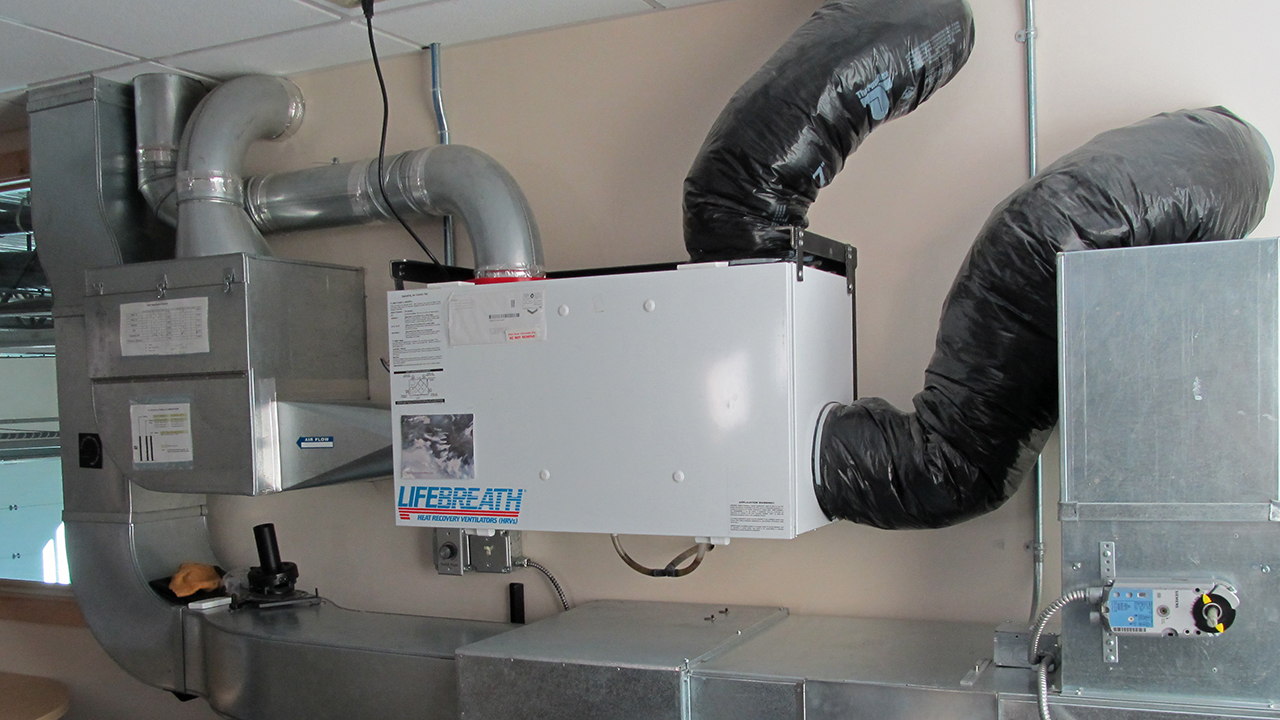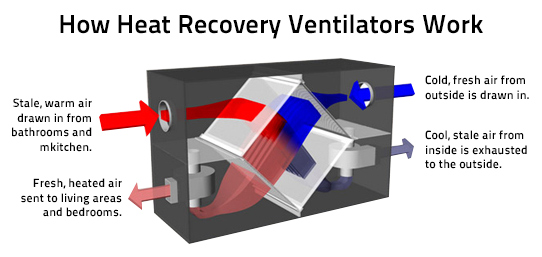Exploring the Perks of Heat Recovery Ventilation for Power Effectiveness in Houses
Heat Recovery Ventilation (HRV) systems provide property owners a practical technique to enhancing power efficiency. By redeeming warm from outbound air, these systems can considerably reduce cooling and heating expenses. Furthermore, they offer a stable supply of fresh air, boosting interior air quality and convenience levels. As homeowners take into consideration sustainable options, recognizing the nuances of HRV systems becomes progressively vital. What factors should one assess prior to making such a financial investment?
Comprehending Heat Recovery Ventilation Equipments

Exactly How HRV Boosts Indoor Air Top Quality

Energy Cost Savings: The Economic Advantages of HRV
Making best use of energy performance, heat recovery ventilation (HRV) systems offer significant economic benefits for property owners. By recouping and recycling warmth from exhaust air, HRVs substantially decrease heating & click here for more info cooling costs. This innovation can bring about energy savings of approximately 30%, depending upon climate and usage patterns. Property owners usually see decreased energy bills shortly after installment, making HRVs an economically sensible financial investment with time. Furthermore, lots of regions supply motivations or discounts for energy-efficient upgrades, even more enhancing the economic allure. As power prices proceed to increase, the cost-effectiveness of HRVs comes to be significantly clear. Generally, the consolidation of HRV systems not just advertises power performance however likewise adds Check This Out to lasting monetary cost savings for homes.
The Environmental Effect of Heat Recovery Ventilation
A substantial environmental benefit of heat recovery ventilation (HRV) systems depends on their ability to reduce general energy intake. By redeeming heat from exhaust air and transferring it to incoming fresh air, HRV systems minimize the requirement for energy-intensive heating and cooling approaches. This decrease in energy demand adds to decrease greenhouse gas exhausts, as less nonrenewable fuel source is required to maintain comfortable interior temperatures. Additionally, HRV systems enhance interior air top quality by successfully exchanging stagnant air with fresh outside air, reducing reliance on mechanical cooling systems that can damage the environment. On the whole, the application of HRV systems supports sustainable living methods and straightens with global efforts to battle climate change by promoting energy performance in residential setups.
Choosing the Right HRV System for Your Home
Exactly how can home owners guarantee they pick the best heat recovery ventilation (HRV) system for their requirements? Initially, they ought to examine their home's dimension and format, as these factors affect air movement demands. Next off, examining the system's efficiency scores is essential, as greater ratings suggest much better performance and power savings. House owners must additionally think about setup and upkeep costs, contrasting different brand names and models for worth. In addition, it's vital to assess noise levels, as some systems operate more silently than others. Consulting with a/c professionals can supply customized referrals based upon details home problems. Lastly, analyzing user testimonials and service warranties can aid in making a notified choice, making sure that my explanation the selected HRV system effectively boosts interior air quality and power performance.
Frequently Asked Questions

Exactly how Often Should I Clean or Preserve My HRV System?
The frequency of cleaning or preserving a warmth healing ventilation (HRV) system generally relies on usage and environmental factors. Generally, it is recommended to do upkeep every six months to guarantee peak efficiency and air top quality.

Can HRV Equipments Help In Reducing Moisture Levels Indoors?
HRV systems can efficiently decrease indoor moisture levels by trading stagnant, damp air with fresh, drier air from outside. HRV Heat Recovery Ventilation. This process aids maintain a balanced indoor setting, boosting comfort and stopping moisture-related concerns
What Is the Life-span of a Normal HRV System?
The life expectancy of a regular heat recovery ventilation (HRV) system differs, generally lasting in between 10 to 15 years. Regular upkeep can extend its performance and functional life, ensuring peak performance throughout its usage duration.
Are There Any Kind Of Noise Problems With HRV Solutions?
Noise interest in HRV systems can emerge, particularly from follower procedure. However, lots of modern-day devices are developed to lessen sound levels, ensuring they run quietly while preserving performance, which deals with possible disturbances in living environments.
Can I Set Up an HRV System Myself, or Do I Need an Expert?
The specific contemplated whether to install the heat recovery ventilation (HRV) system directly or employ a professional. Usually, while DIY installation is possible, know-how warranties appropriate functionality and conformity with neighborhood structure codes, improving system effectiveness.